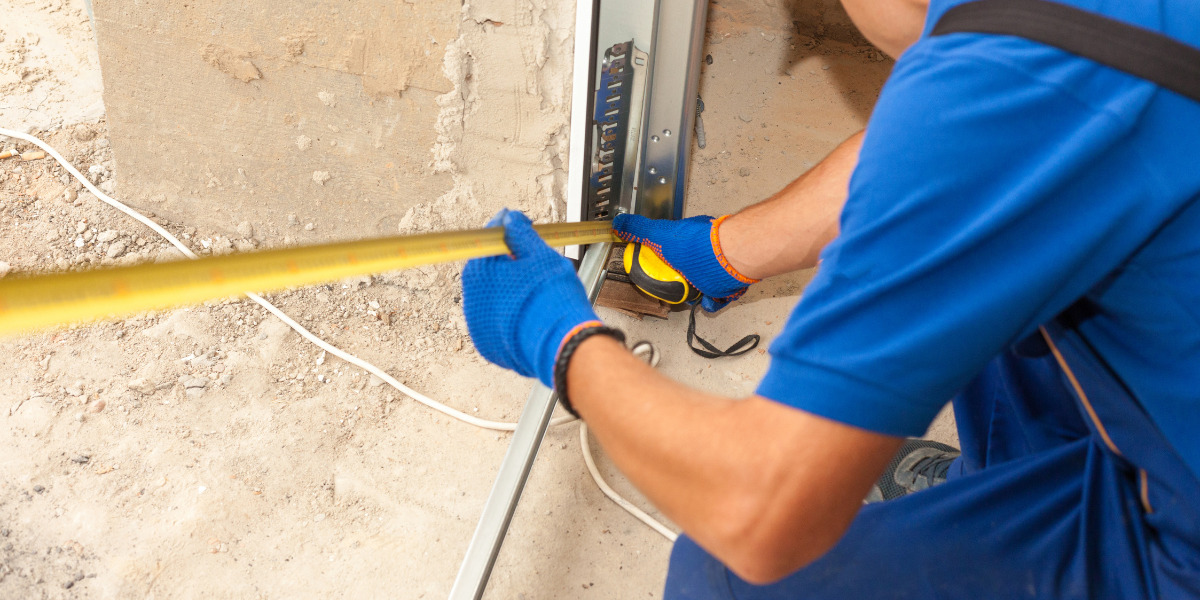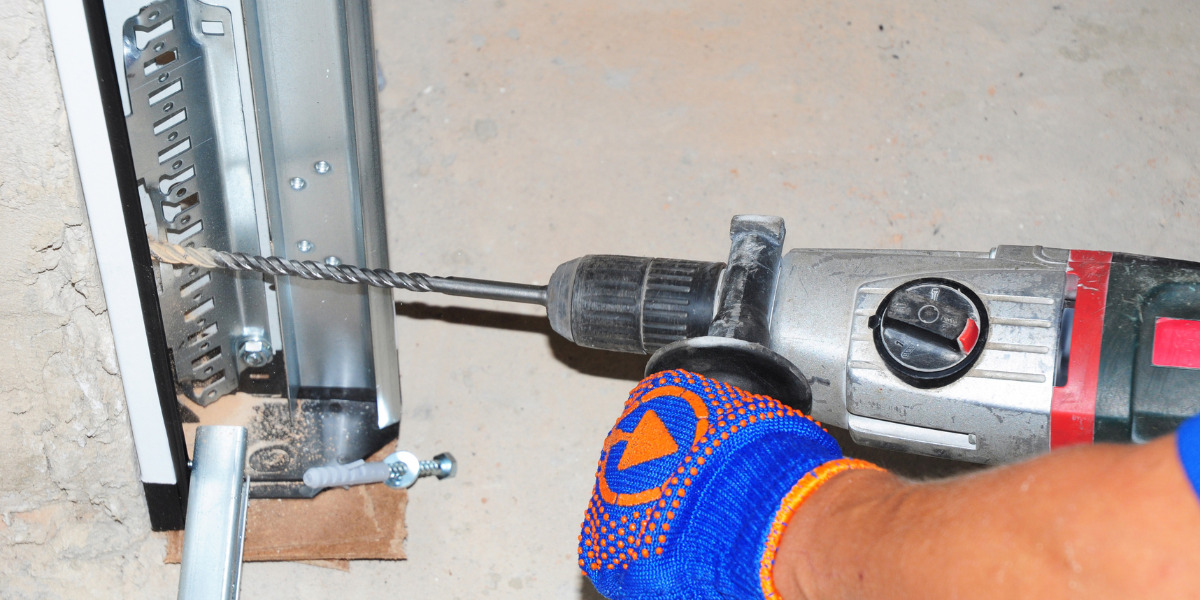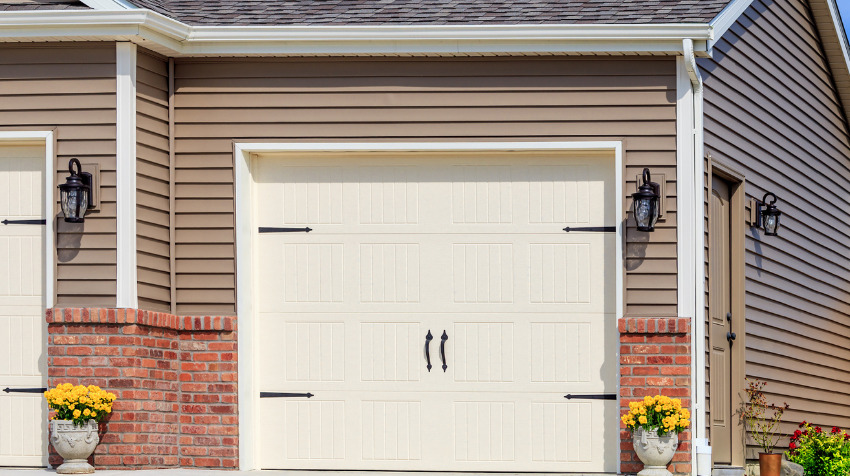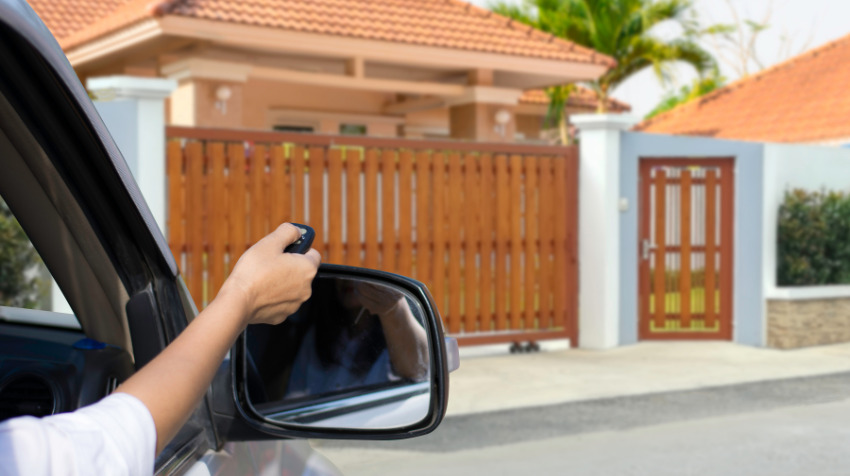Garage Door Tracks: A Comprehensive Guide to Installation and Maintenance
Your garage door is not just a point of entry and exit for your vehicle; it’s an essential component of your home’s overall functionality and security. As one of the largest moving parts of your house, the garage door requires regular maintenance and care to ensure it operates smoothly and safely. Neglecting its upkeep can lead to various issues, ranging from annoying noises and reduced efficiency to safety hazards and costly repairs.
The garage door serves as a primary access point to your home, making it a crucial factor in maintaining your family’s safety and security. A properly functioning garage door acts as a deterrent against potential intruders, protecting not only your vehicles but also the valuables stored within the garage. Moreover, a well-maintained garage door adds to the overall convenience of your daily life. Imagine the frustration of a malfunctioning door when you’re in a rush or dealing with harsh weather conditions.
Understanding the Garage Door Mechanism
A garage door may appear to be a simple device that opens and closes with the push of a button, but its mechanism is a sophisticated system comprising various components working together seamlessly. Understanding the garage door mechanism can help homeowners identify potential issues, perform basic troubleshooting, and appreciate the importance of regular maintenance. Let’s delve deeper into the key elements of the garage door mechanism:
- Springs: Garage doors typically utilize two types of springs – torsion springs or extension springs – to counterbalance the weight of the door. Torsion springs are located above the door, mounted on a metal shaft, while extension springs are placed on the sides. These springs store energy when the garage door is closed and release it to help the door open smoothly. The proper functioning of springs is crucial for the door’s balance and smooth operation.
- Rollers: Rollers are small wheels that help the garage door slide along the tracks as it opens or closes. They can be made of steel or nylon and come in different sizes and designs. Nylon rollers are preferred for their quieter operation, while steel rollers are known for their durability. Regular lubrication of rollers is essential to prevent friction and ensure smooth movement.
- Tracks: The tracks are the metal rails on both sides of the garage door, guiding its movement as it opens and closes. The tracks should be properly aligned, clean, and free from obstructions for the garage door to function smoothly. Misaligned tracks can cause the door to jam or become unbalanced.
- Hinges: Hinges are vital components that connect the individual garage door panels. They allow the door to bend and follow the tracks’ curvature as it opens and closes. Hinges should be well-maintained and periodically lubricated to prevent squeaking or sticking.
- Cables: Cables work in conjunction with the springs to help lift and lower the garage door. They are under high tension, and any fraying or damage can lead to hazardous situations. Homeowners should never attempt to repair or replace cables themselves, as it can be extremely dangerous. Professional assistance is necessary for cable-related issues.
- Automatic Opener: Many modern garage doors come equipped with automatic openers. These openers use a motor to drive a chain, belt, or screw mechanism that facilitates the door’s movement. The automatic opener allows convenient remote operation of the garage door and often includes safety features like auto-reverse to prevent accidents.
- Sensors and Safety Features: Safety is paramount when it comes to garage doors. Infrared sensors are installed near the bottom of the door to detect any obstructions in the door’s path. If an object or person is detected while the door is closing, the sensors trigger the auto-reverse feature, causing the door to stop and open back up. Regularly inspecting and testing these safety features is crucial to ensure they are functioning correctly.

Regular Inspection and Maintenance
Regular inspection and maintenance are key to keeping your garage door in optimal condition. By incorporating these practices into your home maintenance routine, you can ensure that your garage door operates smoothly, stays safe to use, and avoids costly repairs in the long run. Let’s delve deeper into the importance of regular inspection and maintenance:
- Preventing Major Issues: Regularly inspecting your garage door allows you to catch minor problems before they escalate into significant issues. For instance, identifying a loose hinge or a misaligned track early on can prevent further damage to the door’s operation and save you from expensive repairs down the line.
- Ensuring Safety: Garage doors are heavy and operate under tension, which can pose safety risks if not properly maintained. Regular inspections help ensure that all safety features, such as the auto-reverse mechanism and safety sensors, are functioning correctly. This is particularly important if you have children or pets around the garage area.
- Extending Lifespan: A well-maintained garage door is more likely to have an extended lifespan. Proper lubrication of moving parts, cleaning of tracks, and regular adjustments can help reduce wear and tear, increasing the overall longevity of the door and its components.
- Enhancing Energy Efficiency: A properly maintained garage door helps maintain energy efficiency in your home. Weatherstripping and seals play a crucial role in keeping out drafts, moisture, and pests, which in turn helps regulate the temperature inside your garage and home. This is especially valuable if your garage is attached to your living space.
- Avoiding Sudden Breakdowns: There’s never a good time for a garage door to malfunction unexpectedly. Regular maintenance minimizes the risk of sudden breakdowns, which can be inconvenient and disruptive to your daily routine.
- DIY vs. Professional Inspection: While homeowners can perform some basic visual inspections themselves, it’s essential to have a professional garage door technician conduct a comprehensive inspection at least once a year. Trained technicians have the expertise to identify potential issues that may go unnoticed to an untrained eye. They can also provide thorough maintenance, including tightening loose parts, checking the balance, adjusting the springs, and conducting safety tests.
- Seasonal Considerations: Garage doors may require additional attention during certain seasons. For instance, colder weather can affect the lubrication and performance of moving parts, while hot and humid conditions can lead to rust and wear. Addressing these seasonal considerations during maintenance can ensure your garage door functions smoothly year-round.
Cleaning and lubrication
Cleaning and lubrication are two crucial aspects of maintaining a garage door’s smooth operation and extending its lifespan. Regularly cleaning and lubricating the moving parts will help prevent rust, reduce friction, and ensure that the door operates quietly and efficiently. Here’s a closer look at each of these maintenance tasks:
Cleaning:
- Removing Dust and Debris: Dust, dirt, and debris can accumulate on various components of the garage door, including tracks, rollers, and hinges. This accumulation can obstruct the door’s movement, leading to jerky or uneven operation. Use a soft cloth or a brush to remove the debris from these parts.
- Cleaning the Tracks: The garage door tracks are susceptible to the accumulation of grime and dirt. Regularly clean the tracks using a damp cloth and a mild household cleaner. Avoid using abrasive or harsh chemicals, as they could damage the metal or plastic surfaces.
- Inspecting Weatherstripping: Weatherstripping plays a vital role in sealing the garage door against external elements. Check the weatherstripping for any signs of wear or damage, and clean it regularly to ensure it remains effective in maintaining energy efficiency and keeping out dust and pests.
Lubrication:
- Choosing the Right Lubricant: When lubricating your garage door, it’s essential to use the right lubricant. Avoid using WD-40 or other general-purpose lubricants, as they may not be suitable for the garage door’s specific components. Instead, opt for a silicone-based or lithium-based garage door lubricant recommended by the manufacturer or a professional technician.
- Lubricating Moving Parts: Focus on lubricating the moving parts of the garage door, including rollers, hinges, springs, and tracks. Apply a small amount of lubricant to each of these components, ensuring smooth and even coverage.
- Lubricating Springs: The springs are under high tension and are crucial for the proper balance and operation of the garage door. Applying lubricant to the springs can reduce friction and wear, contributing to their longevity and optimal performance.
- Regularity of Lubrication: The frequency of lubrication will depend on the climate and how frequently the garage door is used. As a general rule, it’s recommended to lubricate the moving parts at least once every six months. However, if you live in an area with extreme weather conditions or use the garage door frequently, more frequent lubrication may be necessary.
Benefits of Regular Cleaning and Lubrication:
- Smooth and Quiet Operation: Cleaning and lubrication reduce friction between moving parts, resulting in quieter and smoother garage door operation.
- Extended Lifespan: Proper maintenance through cleaning and lubrication can extend the lifespan of various garage door components, saving you money on premature replacements.
- Preventing Rust and Corrosion: Regular cleaning helps remove dirt and debris, preventing rust and corrosion from forming on metal parts.
- Improved Energy Efficiency: Keeping the garage door’s weatherstripping clean and in good condition ensures a tight seal, improving energy efficiency by minimizing air leaks.
By dedicating a little time to regular cleaning and lubrication, homeowners can ensure their garage door functions optimally, promoting safety, convenience, and peace of mind. However, if you encounter any significant issues or are unsure about performing these maintenance tasks, it’s always best to seek the assistance of a professional garage door technician for expert guidance and service.
Aligning the Tracks of a Garage Door: Ensuring Smooth Operation and Safety
Common Causes of Misaligned Garage Door Tracks:
Garage door tracks can become misaligned over time due to various factors. Understanding these common causes is essential for effective repairs and maintenance:
- Impact: Accidental collisions with the garage door, vehicles, or other objects can lead to track misalignment. Even a minor impact can disrupt the tracks’ alignment, affecting the door’s smooth movement.
- Weather Changes: Extreme weather conditions, such as temperature fluctuations and humidity, can cause the metal tracks to expand or contract, leading to misalignment.
- Wear and Tear: Continuous usage of the garage door can lead to natural wear and tear of the components, including the tracks. This wear can eventually cause the tracks to shift from their original position.
- Loose Hardware: If the bolts, nuts, or screws holding the tracks in place become loose, the tracks may shift, resulting in misalignment.
- Lack of Maintenance: Neglecting regular maintenance, such as cleaning and lubricating the tracks, can contribute to misalignment issues.
Balancing and Adjusting Tension Springs
Tension springs are vital mechanical components used in a wide range of applications to store potential energy by stretching or compressing. They are commonly found in various machines, devices, and mechanisms, such as automotive suspensions, garage doors, trampolines, and industrial equipment. Properly balancing and adjusting tension springs is essential to ensure the smooth functioning, safety, and longevity of the systems they are integrated into.
Understanding Tension Springs: Tension springs, also known as extension springs, are typically made of coiled steel and have hooks or loops on each end. When extended, they exert a force in the opposite direction to try to return to their original coiled state. The tension created by these springs allows them to counterbalance other forces, such as gravity or mechanical loads, enabling various systems to operate efficiently.
Importance of Balancing: Balancing tension springs is a crucial step during the design and assembly of any system they are used in. Proper balancing ensures that the spring applies the correct amount of force and behaves predictably in response to external loads. An imbalanced or incorrectly adjusted tension spring can lead to several issues, including:
- Performance Problems: If the tension is too weak, the system may not function optimally, leading to reduced efficiency and potential malfunctions. On the other hand, excessive tension may overload the components, causing premature wear and failure.
- Safety Concerns: Inadequate or excessive tension in critical applications can compromise safety. For instance, a garage door with an imbalanced spring may not stay open or closed securely, posing a risk of accidents.
- Uneven Load Distribution: Imbalanced tension springs can result in uneven distribution of loads, causing unequal stress on different parts of the system. This imbalance can lead to premature wear and potential catastrophic failure.
Adjusting Tension Springs: Proper adjustment of tension springs is a precise task that should be performed carefully. The process involves adjusting the length or tension of the spring to achieve the desired balance. Here are some essential steps for adjusting tension springs:
- Safety First: Before attempting any adjustments, it is essential to ensure the system is powered off and any potential energy stored in the springs is released.
- Determining the Ideal Tension: The first step is to identify the optimal tension for the specific application. This requires considering factors such as the weight of the load, the desired level of counterbalance, and the expected range of motion.
- Measuring and Adjusting: Using proper tools, measure the current tension of the spring. Depending on the design, some springs may have adjustment mechanisms or pre-defined positions for setting the tension. In other cases, adjusting the tension might involve stretching or compressing the spring manually.
- Testing and Fine-Tuning: Once the tension is adjusted, carefully test the system under controlled conditions to observe its behavior. Fine-tune the tension as necessary to achieve the desired balance and performance.
- Periodic Inspection: Tension springs, like all mechanical components, can experience wear over time. Regular inspections and maintenance are essential to ensure the continued functionality and safety of the system.
In industrial settings or complex machinery, it is often advisable to seek the expertise of qualified engineers or technicians to balance and adjust tension springs properly.

Knowing When to Call a Garage Door Repair Professional
A functional and well-maintained garage door is crucial for the security and convenience of any home or business. However, like any mechanical system, garage doors can experience issues over time. While some minor problems can be tackled with a bit of DIY knowledge and basic tools, there are instances where it’s best to call a professional garage door repair service. Knowing when to seek professional help can prevent further damage, ensure safety, and save you time and money in the long run.
Frequently Asked Questions:
Q1: How often should I inspect my garage door tracks? A1: It’s recommended to inspect your garage door tracks at least once every three months. Regular inspections help identify any issues early on and prevent potential track misalignment problems.
Q2: What are the signs of garage door track misalignment? A2: Common signs of garage door track misalignment include loud scraping or grinding noises during operation, visible gaps between the tracks and rollers, uneven door movement, or the door getting stuck while opening or closing.
Q3: Can I fix track misalignment myself, or do I need professional help? A3: For minor adjustments like tightening loose bolts or lubricating the tracks, you can try fixing the issue yourself. However, if you notice significant misalignment, it’s best to seek professional assistance to avoid further damage and ensure safe repairs.
Q4: How often should I lubricate my garage door tracks? A4: Lubrication of garage door tracks should be done every six months. Use a silicone-based lubricant to keep the rollers and tracks running smoothly, reducing wear and tear.
Q5: What should I do if my garage door comes off its tracks? A5: If your garage door comes off its tracks, stop using it immediately to prevent additional damage. Contact a professional garage door technician to assess the situation and perform the necessary repairs safely.
Conclusion:
In conclusion, maintaining a well-functioning garage door is crucial for homeowners to ensure safety, convenience, and the longevity of their garage door. By following a few essential tips, homeowners can keep their garage doors on track and in optimal condition.




